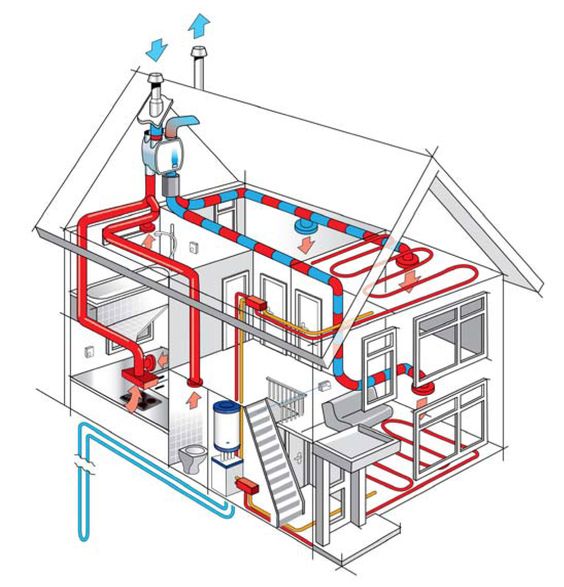How to Choose the Right Air Conditioning Unit for Your Home
Evaluating Your Room: Trick Measurements for A/c Setup ======================================================
If you've ever discovered yourself in an area where the cooling just could not appear to keep up with the summer season heat, you could benefit from examining your space.
Ensuring your air conditioning system is correctly sized and installed requires attention to crucial measurements such as room size, window and door measurements, ceiling elevation, insulation top quality, and air movement patterns. https://fulhamhvac.co.uk/air-conditioning-installation.html By recognizing these aspects, you can maximize your cooling system's efficiency and effectiveness.
But just how precisely do these measurements impact your a/c installation?
Trick Takeaways
- Precisely measure room dimensions for proper unit capability and airflow optimization.
- Select energy-efficient doors and windows to boost insulation and reduce warm transfer.
- Make certain ideal vent positioning and unblocked air flow for effective cooling circulation.
- Update insulation to improve thermal resistance, seal voids, and improve overall system efficiency.
Space Size Measurements

When determining area dimension for cooling setup, make certain you accurately evaluate the dimensions to figure out the ideal device ability. Beginning by considering furnishings positioning within the room. Furnishings can block air flow if placed also close to vents or the cooling device. To ensure maximum air conditioning efficiency, prepare your furniture in a way that advertises correct air movement throughout the area.
Additionally, consider the space's format and dimension when preparing for air circulation. Appropriate air flow is essential for keeping a constant temperature throughout the room. Bear in mind any type of challenges that could interfere with the circulation of air, such as curtains obstructing vents or big items of furniture blocking air movement. By guaranteeing appropriate space for air to distribute freely, you can maximize the efficiency of your a/c system and produce a comfortable environment in your house.
Doors And Window Capacities
To ensure appropriate a/c installment, analyze the dimensions of windows and doors in the room to optimize air movement and cooling down effectiveness. When evaluating doors and window dimensions, take into consideration the following:
Structure Compatibility: Make sure that the cooling device you choose works with the frames of your doors and windows. Incorrect fit can result in air leakages and reduced power performance.
Setup: Take into account the installation process when picking an a/c device. Some units may need particular window dimensions or extra modifications for correct setup.
Product Choice: Choose windows and doors made from materials that supply excellent insulation to boost energy efficiency. Appropriately shielded windows and doors can assist keep a consistent temperature in the room.
Power Effectiveness: Opt for energy-efficient doors and windows to lower warmth transfer and boost the general efficiency of your a/c system. Energy-efficient materials can improve the air conditioning capabilities of your area while reducing energy costs.
Ceiling Elevation Analysis
Examining the height of your ceiling is vital for establishing the most effective positioning of a/c vents for reliable cooling circulation. When evaluating your ceiling height, see to it to take into account the clearance required for both the ductwork and the air conditioning vents. Adequate ceiling clearance guarantees that the ductwork can be set up appropriately with no blockages, enabling excellent air movement throughout the room.
In addition, proper clearance above the vents guarantees that the cooled air can flow freely without any limitations, causing more also cooling down in the room.
When planning the positioning of ductwork, take into consideration the height of your ceiling to avoid any type of problems with setup or efficiency. Properly located ductwork can assist make the most of the effectiveness of your a/c system and make sure that each area gets adequate air conditioning.
Insulation Examination
Analyze the insulation top quality to optimize the effectiveness of your cooling system. Appropriate insulation plays an essential role in maintaining a comfortable indoor atmosphere while taking full advantage of power efficiency. Right here are four bottom lines to examine when reviewing the insulation in your space:
Thermal Resistance: Check the R-value of your current insulation to make sure it satisfies the advised standards for your region. Higher thermal resistance suggests far better insulation quality, which aids in decreasing warm transfer and maintaining a constant temperature.
Insulation Placement: Examine the positioning of insulation throughout your space, focusing on locations such as walls, ceilings, and floors. Properly installed insulation protects against power waste by decreasing warm exchange with the surrounding environment.
Securing Gaps: Determine and secure any kind of gaps or fractures in the insulation to stop air leak. Correctly secured insulation improves power performance by maintaining closed barriers that stop conditioned air from running away.
Updating Insulation: Think about upgrading your insulation to newer, much more energy-efficient products. Upgrading can boost thermal resistance, decrease energy consumption, and enhance the overall efficiency of your cooling system.
Airflow Evaluation
Evaluating the air movement within your space is necessary for making sure peak efficiency of your a/c system. Proper airflow circulation is necessary to preserve regular temperature levels throughout the area. When analyzing airflow, think about the air flow demands of each room to ensure ample air blood circulation.
To assess air flow circulation, start by looking for any kind of blockages such as furnishings blocking vents or particles obstructing duct. Poor airflow can bring about inefficient air conditioning and home heating, causing pain and boosted energy expenses. It's important to deal with any concerns without delay to optimize the performance of your a/c system.
In addition, comprehending the air flow needs of various rooms in your house or workplace is crucial to preserving air top quality and comfort levels. Appropriate ventilation helps remove stale air, smells, and pollutants while generating fresh outside air. By evaluating air movement and air flow demands, you can produce a much more comfortable and healthy and balanced interior environment for everyone.
Frequently Asked Concerns
Just How Can I Establish the most effective Place for My Cooling Unit Within the Room?
When identifying the best place for your AC system in a space, take into consideration the cooling capacity and air blood circulation. Maintain the unit far from challenges that could block air movement and place it centrally in the space to assure even cooling.
Perfect positioning helps distribute trendy air successfully, making best use of the unit's performance. Correct positioning can make a significant difference in exactly how successfully your ac system cools the room.
Are There Any Type Of Certain Factors to Think About When Setting Up an A/c Unit in a Multi-Level Structure?
When setting up an air conditioning device in a multi-level structure, think about aspects like power efficiency, cooling down capability, positioning, and access.
Make sure the device is strategically placed to cool multiple degrees successfully. Opt for a location that permits very easy accessibility for repair and maintenance.

Furthermore, evaluate the cooling ability to make certain it can adequately cool down the whole building. These factors to consider will certainly help enhance the performance of your cooling system in a multi-level setting.
What Is the Ideal Range Between the Cooling Device and Any Type Of Heat-Producing Devices in the Room?
When putting your a/c system, make sure correct ventilation distance from heat-producing appliances in the space. This aids with warm diffusion and avoids the air conditioner from functioning tougher to cool the space.
Go for an optimal distance of a minimum of 3 feet in between the air conditioning unit and any warm sources like stoves or lights. Keeping this separation will certainly optimize the effectiveness of your a/c system and extend its life-span.
Exist Any Type Of Prospective Risks That I Should Understand When Installing an Air Conditioning Device in a Small or Enclosed Area?
When setting up an a/c device in a small or encased space, bear in mind possible threats. Ensure to address air flow worries to avoid air top quality concerns. Take safety and security preventative measures seriously, particularly with minimal room restraints.
Understand installment difficulties like correct placement for finest efficiency. Focus on security and make certain your area is well-ventilated to prevent any risks related to mounting a cooling system in a constrained location.
How Can I Guarantee Correct Air Flow for My Air Conditioning System to Run Successfully in an Area With Limited Air Flow?
To optimize air flow for your cooling device in a room with limited airflow, assurance correct air flow by maintaining vents clear and unblocked.
Consistently clean or change air filters to preserve efficiency. Air conditioning filter replacement
Take into consideration using a fan to assist circulate air and avoid stagnant pockets.
Placement the device in a location where air can stream easily, avoiding cramped spaces.
These actions will certainly aid your a/c unit run effectively and cool down the space effectively.
Final thought
Since you have actually taken vital dimensions for your a/c setup, you're one action more detailed to ensuring peak cooling performance in your area.
By properly reviewing space dimension, window and door dimensions, ceiling elevation, insulation, and air movement, you can make enlightened choices on the very best a/c unit for your needs.
Bear in mind, appropriate dimensions are essential for an effective and efficient air conditioning installment.